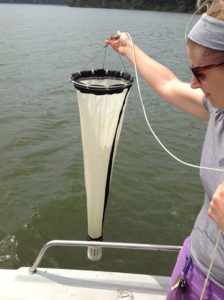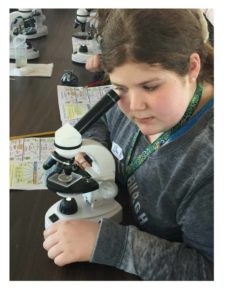Algae play a crucial role in an aquatic ecosystem by forming the base of an aquatic food web. However, during  certain conditions, some algae may rapidly proliferate causing a “bloom”.
certain conditions, some algae may rapidly proliferate causing a “bloom”.
Blooms of blue-green algae, or cyanobacteria, can produce toxins (cyanotoxins). Harmful Algal Blooms (HABs) can present health risks to humans and animals who recreate in them or who ingest contaminated drinking water.
FORE has collaborated with multiple partners, including local conservation districts, to educate the public about harmful algal blooms and to test technologies that citizens can use to identify HABs.
We have hosted workshops on HAB identification and nutrient management for farmers, landowners and conservation professionals, and have developed a “Good, Bad and Managed” Field Guide for identifying and managing algal blooms in ponds.
Click here for the “Good, Bad and Managed” Field Guide
FORE has also collaborated with Northern Kentucky University (NKU) and USEPA to test a camera application developed by NKU to detect potential Harmful Algal Blooms. In the past, FORE has hosted a camera at Queen City Riverboats to perform algal counts on water samples to “ground truth” what the camera sees. Similar cameras are located at the Thomas More Biology Field Station and Harsha Lake.
Students participating in FORE’s River REACH program also collect and study river samples to classify the different types of algae and zooplankton that make up the Ohio River ecosystem.
Check out this article for more information!

